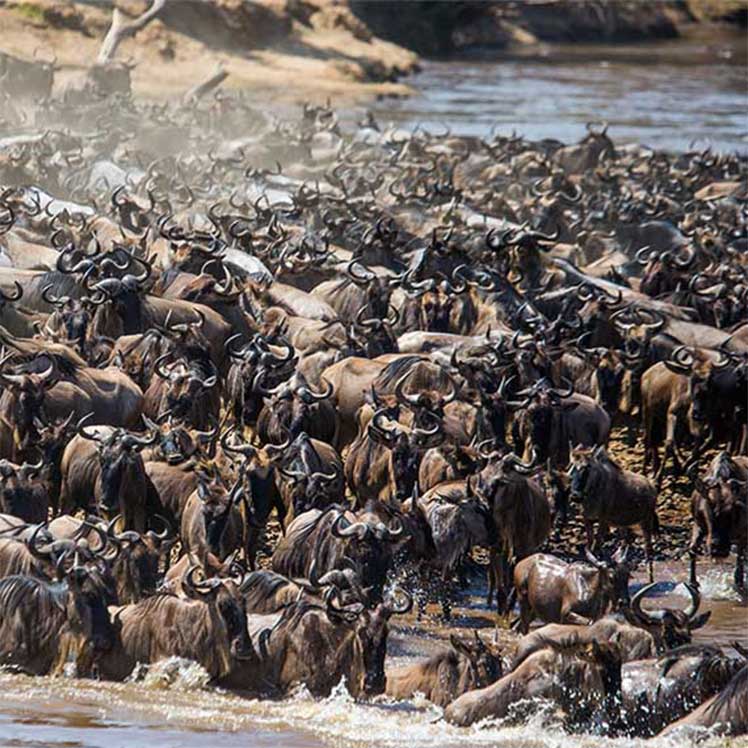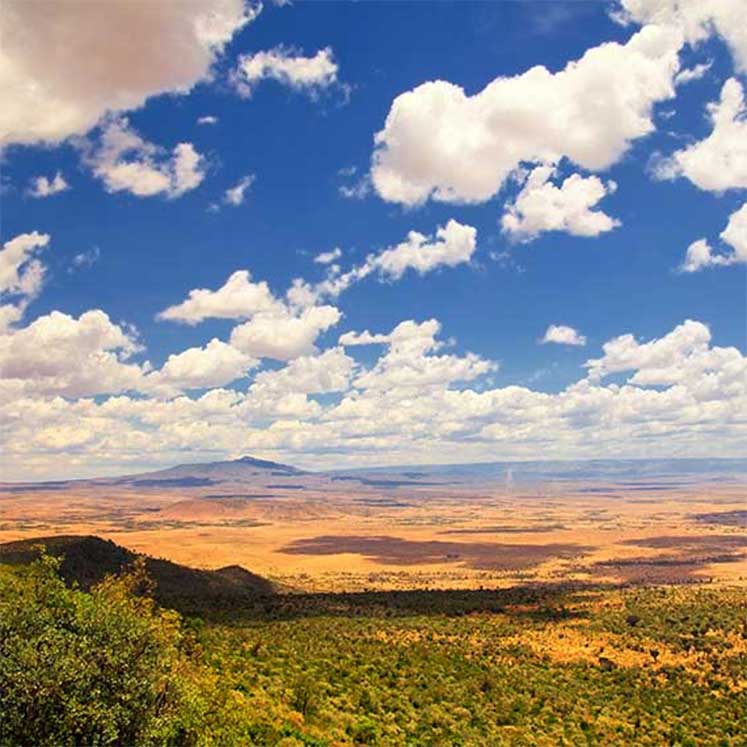Kenya & Tanzania
The Great Migration
Many of Tanzania and Kenya’s celebrated attractions sit conveniently close to the border. The road network in northern Tanzania is less extensive than in Kenya, but main roads are as good as Kenyan roads, better in some cases. Week long tours provide an overview, but its worth spending longer here to create space between the bigger drives, experience some Maasai culture and perhaps push south to Lake Manyara, home to tree-climbing lions, or north, to the Great Rift Valley. If you hope to include parks further afield, such as Selous and Ruaha in Tanzania or Laikipia and Samburu in Kenya, or want to relax on the coast, factor in days of driving or a costly internal flight. Many of Tanzania and Kenya’s celebrated attractions sit conveniently close to the border. The road network in northern Tanzania is less extensive than in Kenya, but main roads are as good as Kenyan roads, better in some cases. Weeklong tours provide an overview, but its worth spending longer here to create space between the bigger drives, experience some Maasai culture and perhaps push south to Lake Manyara, home to tree-climbing lions, or north, to the Great Rift Valley. If you hope to include parks further afield, such as Selous and Ruaha in Tanzania or Laikipia and Samburu in Kenya, or want to relax on the coast, factor in days of driving or a costly internal flight.
Lake Victoria
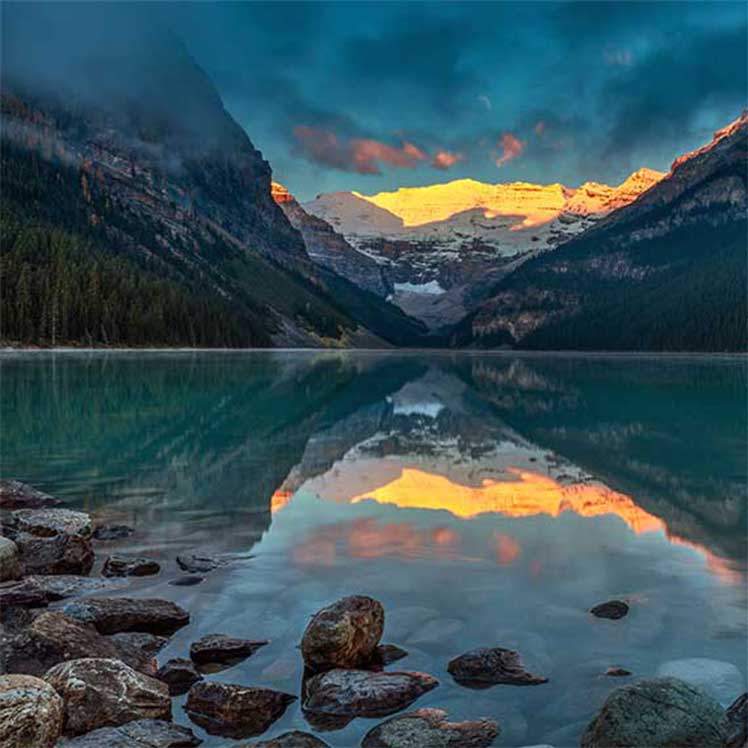
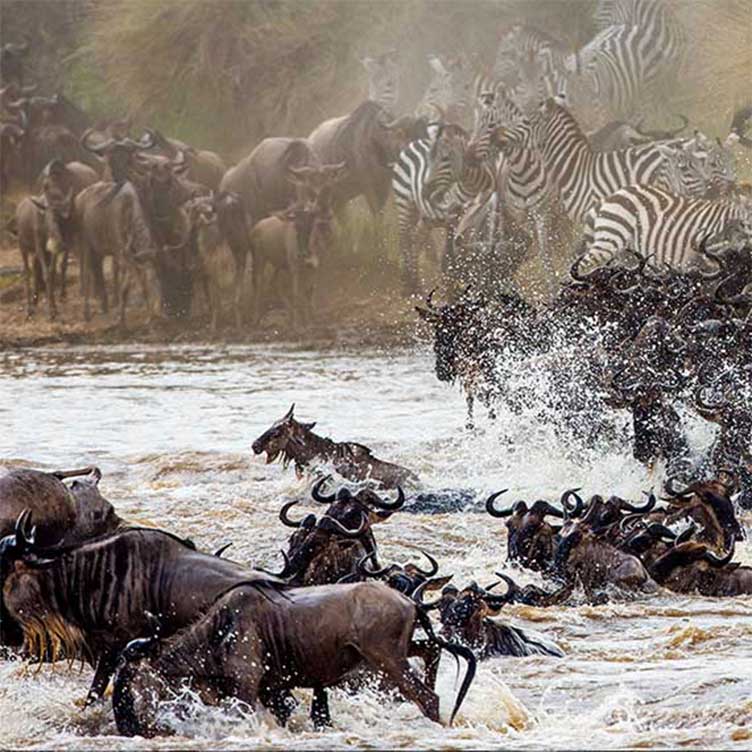
Masai Mara
Ngorongoro Crater
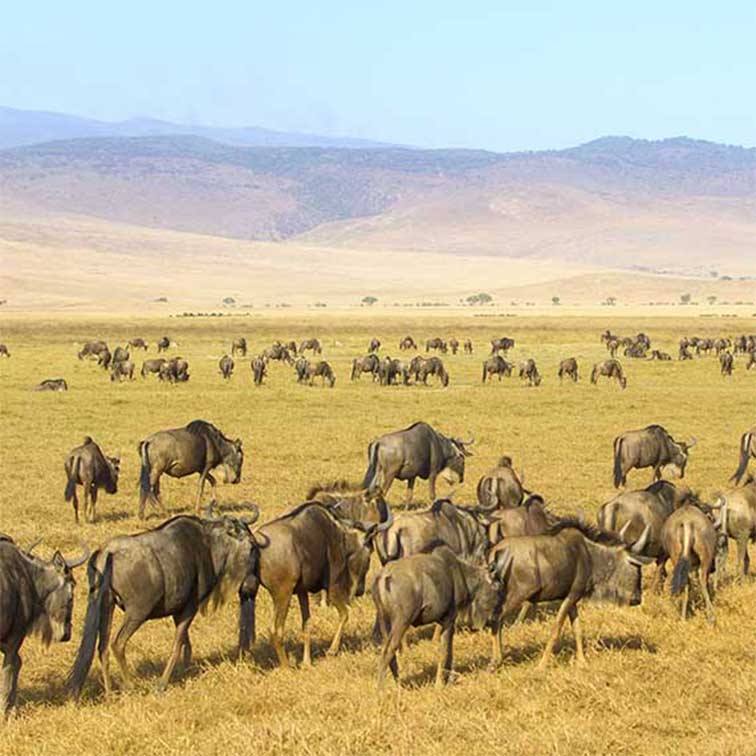
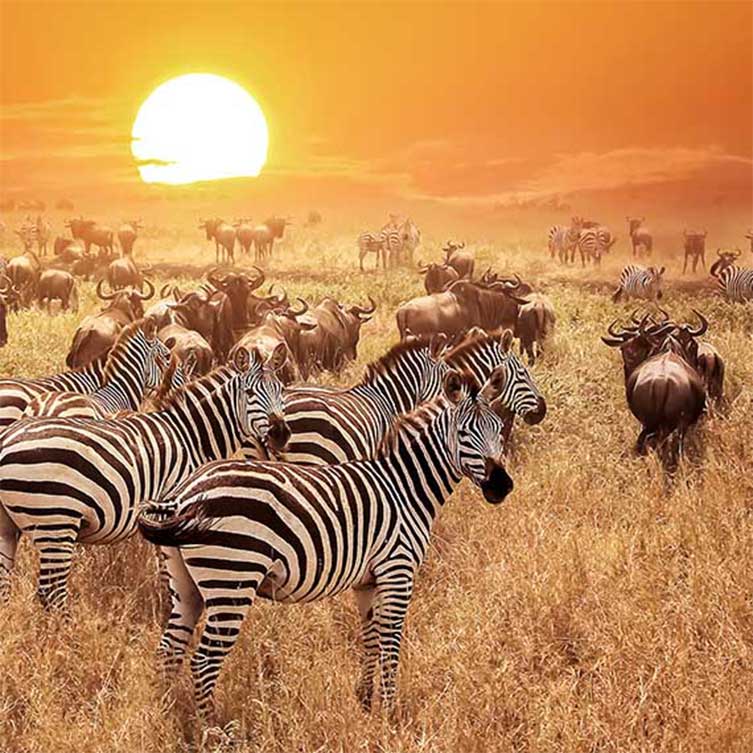
Serengeti National Park
The Great Migration
